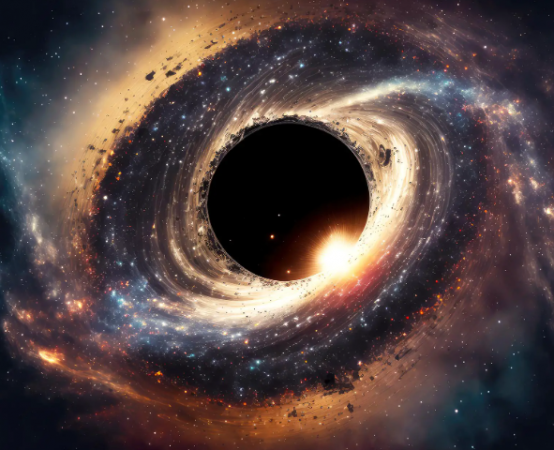
Washington D.C: Scientists have recently unveiled a startling discovery regarding Earth's closest supermassive black hole, Sagittarius A*. Recent data from NASA's IXPE (Imaging X-ray Polarimetry Explorer) telescope has revealed that approximately 200 years ago, Sagittarius A* underwent a remarkable awakening.
Published in the esteemed journal Nature, the findings present compelling evidence that Sagittarius A* began emitting significantly higher levels of X-rays than ever observed before. This newfound activity suggests that the black hole initiated the process of engulfing nearby gas and cosmic debris two centuries ago. While the cause behind this sudden surge in activity remains uncertain, it could potentially be attributed to a transformation in the black hole's environment or even a merger with another black hole.
Situated at the heart of the Milky Way galaxy, Sagittarius A* is positioned approximately 25,000 light-years away from Earth. Possessing a mass equivalent to an astonishing four million suns, it is encircled by a scorching disk composed of gas and dust particles.
Also read: Asus Unveils ROG Ally Handheld Gaming Console, Set to Launch in India on July 12
This groundbreaking revelation challenges previous assumptions regarding Sagittarius A*'s inactivity and suggests that it may have experienced episodes of vigorous activity throughout history. However, this is the first time that scientists have been able to directly witness such behavior, thanks to advancements in observational capabilities.
The implications of this discovery extend far beyond our immediate understanding of black holes. It offers an invaluable opportunity for scientists to gain deeper insights into the intricate interactions between supermassive black holes and their surroundings, shedding light on their evolutionary processes over extended periods.
Also read: Starlink Revolutionizes India's Internet Landscape, Enabling Nationwide Connectivity
Lead author of the study, Dr. Andrea Merloni, expressed her enthusiasm, stating, "This is a truly captivating breakthrough. It reveals that Sagittarius A* is far from dormant, capable of entering phases of intense activity. The implications of this finding could be pivotal in advancing our knowledge of how supermassive black holes evolve throughout the ages."
While the newfound activity of Sagittarius A* does not pose an immediate threat to Earth, it raises intriguing questions about the future of our planet. Should Sagittarius A* become increasingly active, there is a possibility of orbital disruptions among stars within the Milky Way, potentially affecting Earth as well.
Also read: NASA Unveils Groundbreaking Experiments to Investigate Solar Corona During 2024 Total Solar Eclipse
Additionally, the black hole could eventually merge with another, resulting in a surge of high-energy radiation that might reach our planet. Nevertheless, it is crucial to emphasize that these potential scenarios lie in the distant future, and there is no need for alarm at present. Scientists are diligently studying Sagittarius A* and other supermassive black holes, diligently researching and providing further insights into any potential risks that Earth may face in the long run.
As humanity delves deeper into the mysteries of the universe, discoveries such as this propel our understanding forward, unveiling the remarkable phenomena that shape our cosmic existence.
Also read: The Making of a Political Giant: Exploring the Factors That Led to the Formation of the BJP